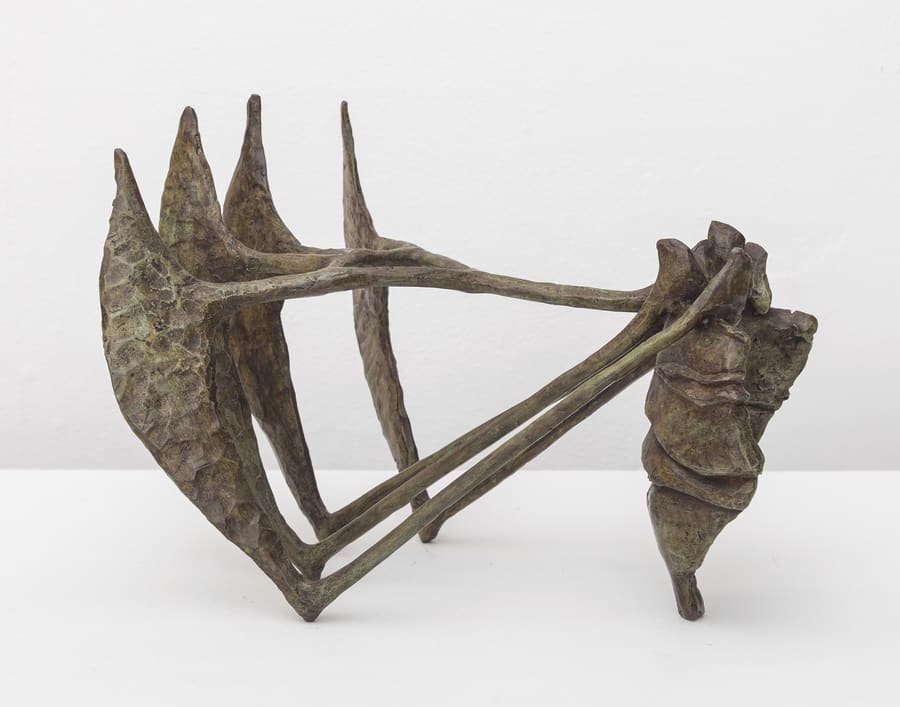-
Artworks

Helen Evans Ramsaran
Wounded Cutlasses , 1991Bronze8 x 10 x 8 in
20.3 x 25.4 x 20.3 cmCopyright The ArtistRamsaran's career as a sculptor spans five decades. Much of that time was spent creating sculpture around the world in places such as Africa, Brazil, China, Costa Rica, Guatemala, Japan...Ramsaran's career as a sculptor spans five decades. Much of that time was spent creating sculpture around the world in places such as Africa, Brazil, China, Costa Rica, Guatemala, Japan and Mexico. Wounded Cutlasses, 1991 was inspired by the carnage witnessed by Ramsaran during WW II, the Korean War and the Vietnam War. The work was intended to suggest that the weapons used were wounded instead of the people utilizing them. The sight of soldiers coming home with one arm or leg left an indelible impression on the artist.
In 1994, Ramsaran had a solo exhibition at the Chrysler Museum in Norfolk, Virginia that traveled to The Studio Museum in Harlem. In an essay written by Okwui Enwezor about the show, he states the following:
"Patinated bronze, hand-worked with incised details and textures is Ramsaran’s amanuenses. Her sculpture’s spare minimalist lines make them seem as if the sculptor’s authorial presence has been submerged, more to echo the quiet resonance of the works’ conjunctive rather than volumetric elements.
Resolute, her work seeks a reconnection back to sculpture’s traditional siting within the parameters of the body (the figure), also markedly shifts in deemphasizing that body, by evacuating it from the quantifiable zone of its temporal abode. By evacuating this body from this often, rigidly sited space, Ramsaran’s work is able to offer the viewer a more precise perspective: the body broken down to its constituent and most elemental existence.
Reading the ontological codes in her work, one can sense where Ramsaran has loosened those networks that forever kept returning to the body as the prime field of visual representation; as the meta-territory that activates the object’s visual elocution. In this manner she is able to translocate her forms back to the framework and architecture which holds the body in place.
It is through this form of visual speech in three dimensions that African sculptural influences most resolutely make their entrance. For in African sculpture, the power of the work is not at all invested in the object, but rather in its aura; in its affinity within other spatial and associative meanings extraneous to the sculpture’s objecthood."
- Okwui Enwezor, 1994
NKA: A Journal of Contemporary African Art
